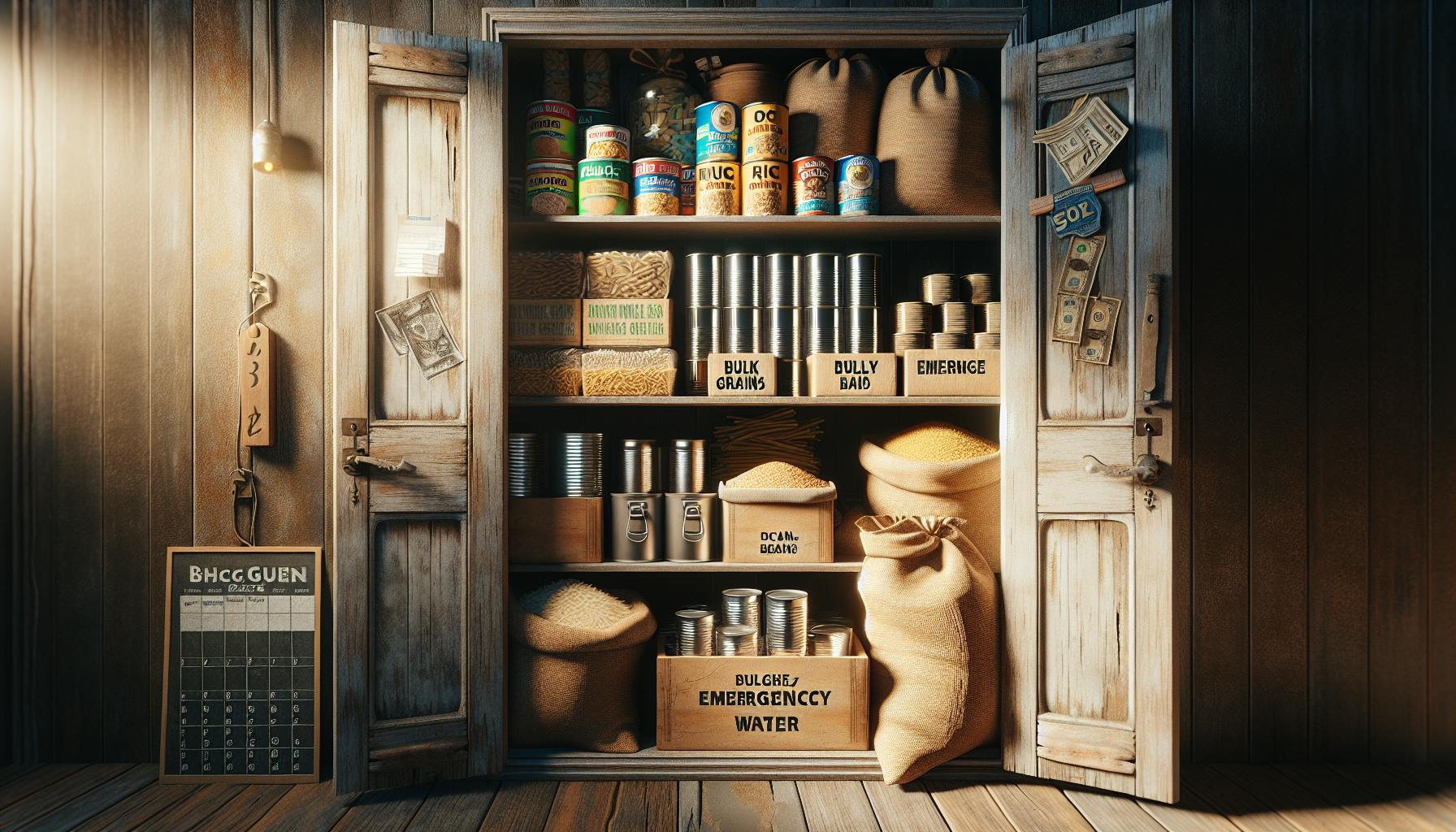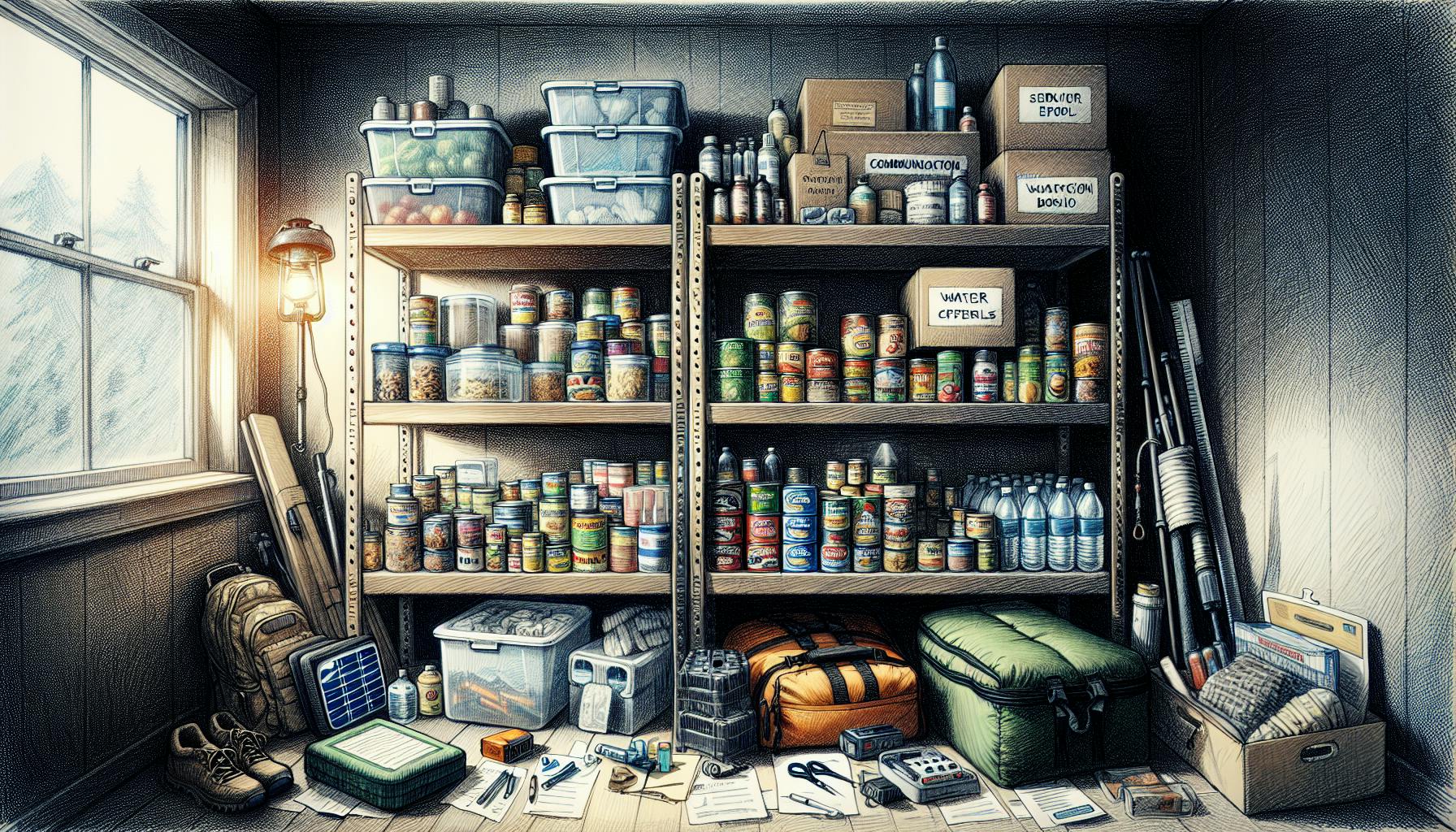When building a bug out bag, having the right essentials can mean the difference between life and death in an emergency.
This guide will provide you with a comprehensive bug out backpack packing list so you can create a survival kit tailored to your needs.
You'll learn about critical categories of gear including water, food, shelter, fire, first aid, and more. We'll also explore strategies for organizing your pack so your most vital items are readily accessible when needed most.
Introduction to Bug Out Backpacks
This post provides an essential guide to packing the perfect bug out backpack, ensuring you have the critical survival gear and supplies in case an emergency situation requires immediate evacuation.
Understanding the Concept of Bug Out Backpacks
Bug out backpacks, also called 72-hour backpacks or get home bags, are survival kits designed to contain everything needed to endure an emergency evacuation or safely get home in a crisis. They are lightweight, durable bags filled with food, water, first aid, tools, and other gear to sustain oneself for at least 72 hours. Bug out bags prepare people for unexpected disasters like floods, earthquakes, storms, fires, infrastructure failures, civil unrest, and more.
The Importance of Being Prepared with a Bug Out Bag
Having adequate survival supplies can literally make the difference between life and death in an emergency scenario. Bug out bags contain necessities like food, water, first aid, shelter, navigation tools, and other gear tailored to endure several days alone or on the move. Those forced to hastily evacuate homes, workplaces, etc. during a disaster will be extremely grateful to have critical items on hand versus scrambling to gather supplies last-minute. Wise preppers know that disasters can strike anytime without warning. Having a prepared bug out bag brings essential peace of mind.
Criteria for Selecting the Best Bug Out Backpacks
When selecting the best bug out backpack, key criteria include:
- Durability - Withstands wear and tear during tough use and weather
- Water-resistance - Keeps contents dry if exposed to rain, floods, etc.
- Capacity - Holds 3+ days of survival gear and supplies
- Portability - Lightweight, ergonomic, and easy to transport on foot
Matching a bug out bag to your climate, destination, fitness level, and situation helps optimize preparedness. Carefully curating compact yet comprehensive contents saves weight and space.
Evaluating Top Bug Out Backpacks for Ultimate Preparedness
Many excellent bug out backpack options exist for purchase or DIY assembly. Leading choices include:
- 5.11 Rush72 - Durable, high-capacity tactical backpack great for 72-hour use
- REEBOW Gear Assault Pack - Affordable, molle-compatible assault pack
- Wise Owl Outfitters Hammock HeatReflective Camping Hammock - Integrates shelter system with backpack
- Kelty Redwing Tactical Backpack - Rugged pack with lots of MOLLE attachment points
- Direct Action Ghost Tactical Backpack - Ultra-lightweight but spacious at 25+ liters capacity
When selecting a backpack, consider your budget, skill level, climate, evacuation needs, and other criteria. Finding the right balance of features helps compile the ultimate portable survival kit.
Compiling a Comprehensive Bug Out Backpack List
A well-stocked bug out bag contains:
Water - Enough for 3+ days of survival needs
Food - High protein, lightweight, long-shelf life items
First Aid - Bandages, ointments, medicines, etc.
Tools - Knives, fire starters, multi-tools, paracord, duct tape
Shelter - Tent, tarp, emergency blanket, hammock
Clothing - Weather-appropriate outfits, gloves, hats
Navigation - Map, compass, GPS device, signal mirror
And other critical items like flashlights, batteries, toiletries, cash, radios, masks, etc. Carefully curating compact yet complete bug out backpack prepares anyone to safely endure several days alone until rescued. Choose items tailored to your climate, terrain, skills, health needs, and likely risks.
The Ultimate Survival Kit: Bug Out Bag Essentials
This section outlines the key categories of essential items to include in your bug out bag to ensure you are fully prepared with critical gear, tools, food, water, first aid, and other vital supplies in an emergency situation.
1. Water Solutions: Hydration and Purification
Having access to safe drinking water is the most critical survival need. Pack durable, leak-proof water bottles and portable water filtration systems like the LifeStraw Personal Water Filter or Sawyer Mini Water Filter to purify found water. Choose water containers that hold at least 1-2 liters each for a 72+ hour supply.
2. Nutritional Needs: Non-Perishable Food
Pack high-calorie, non-perishable food items like protein bars, beef jerky, trail mix, dried fruits and nuts. These will provide sustenance without refrigeration. Also include a lightweight, packable fishing kit with hooks, line, and lures to harvest food from rivers, lakes, etc.
3. Shelter Essentials: Waterproof Backpacks and Sleep Systems
Choose a durable, waterproof hiking backpack to carry your gear. Pack a waterproof tent, tarp/poncho, and compact sleeping bag with insulating pad. These create mobile shelter from the elements.
4. Fire and Illumination Tools
Stay warm and maintain visibility with stormproof matches, lighter, fire starter sticks, flashlight/headlamp, candles. Fire serves multiple survival needs from warmth to cooking to signaling. Light prevents injuries at night.
5. Clothing and Footwear
Select versatile layers and waterproof hiking boots to adapt to changing weather and rugged terrain. Choose quick-drying, insulating fabrics like wool and polyester that retain warmth even when wet.
6. Multipurpose Gear and Self-Defense
A sturdy fixed-blade knife, parachute cord, and duct tape have many uses from shelter-building to repairs. A compass helps navigate without GPS. Pepper spray deters aggressive animals and humans.
7. Medical Supplies and Hygiene Items
A first aid kit treats injuries from minor to trauma. Pack OTC meds, gauze, tourniquet, gloves, scissors, antibiotic ointment. Also include toilet paper, toothbrush, menstrual products, soap for health/sanitation.
8. Power and Communication Devices
Solar chargers, crank radios, and spare batteries maintain access to critical devices. Choose manual options as backup. Pack maps, emergency radio, GPS and satellite communicator to navigate, communicate, and summon emergency help.
9. Organization System
Utilize multiple exterior pockets and interior dividers/packing cubes to neatly separate and quickly access gear categories like water, food, first aid, tools, shelter.
10. Vital Documentation
Store paper copies of ID cards, cash, contacts list, trail maps, important phone numbers, etc. in a waterproof bag or case to preserve your identity and resources.
sbb-itb-b932644
Strategies for Packing Bug Out Backpacks
Proper packing of your bug out backpack is critical to ensure you have the gear you need when an emergency strikes. Here are some tips for organizing your pack:
Segmenting Bag Contents: Systematic Arrangement
- Use packing cubes, stuff sacks, and pouches to separate and protect gear
- Group together items you'll need quick access to, like first aid supplies
- Keep clothes clean and dry by packing them in waterproof bags
Optimizing Load Order: Balancing Your Pack
- Place heavy items like food and water close to your back to distribute weight
- Pack frequently used things towards the top and exterior for easy access
- Put delicate equipment like electronics in the middle for padding and protection
Harnessing External Attachments: Expanding Capacity
- Attach additional pouches and pockets to the exterior with straps and clips
- Lash on extra gear like tents and sleeping pads using the daisy chains
- Expand capacity without overloading the main compartment
Mastering Weight Distribution for Comfort
- Keep pack weight forward over hips to prevent backward tugging
- Add padding to shoulder straps and hip belt for comfort with heavier loads
- Cinch and adjust straps to stabilize the load close to your body
Specialized Compartments: Tailored Gear Storage
- Use dedicated pockets for specific items like hydration bladders
- Secure specialized gear to the exterior like axes, fishing rods, and tools
- Compartmentalize so you know exactly where everything is located
Careful consideration of where you store items in your bug out bag ensures quick access, protection, and balanced carrying comfort no matter the situation.
Putting Your Bug Out Backpack to the Test
Once you've packed your bug out backpack, it's important to complete some final quality checks before considering your emergency go-bag ready for action.
Verifying Pack Weight: Ensuring Mobility
Weigh your backpack fully loaded to aim for 15-25% of your body weight as the maximum carry weight for extended evacuation. Going over this percentage can reduce your mobility and pace over long distances.
Evaluating Storage Space: Sufficient Volume for Essentials
Make sure you have enough space in your bug out backpack for at least 3+ days of critical gear and supplies. This ensures you have sufficient volume to carry essentials like food, water, first aid, shelter, and other survival items.
Accessibility Drills: Quick Access Under Pressure
Practice removing and replacing items from your backpack quickly to confirm everything stows securely but can be deployed rapidly when urgently needed. Having good organization and familiarity with your pack helps access gear efficiently during high-stress scenarios.
Identifying and Addressing Gaps: Comprehensive Coverage
Conduct an inventory of your loaded bug out bag to identify any lacking critical items, and make adjustments so your pack has all essentials covered for at least 72 hours. Addressing gaps ensures comprehensive coverage for short-to-medium-term evacuation needs.
Conducting Field Exercises: Real-World Readiness
Perform mock bug out exercises wearing your loaded backpack to evaluate comfort, organizational efficacy, and the sufficiency of supplies you’ve included. This real-world testing confirms your readiness and ability to deploy your emergency go-bag effectively when required.


